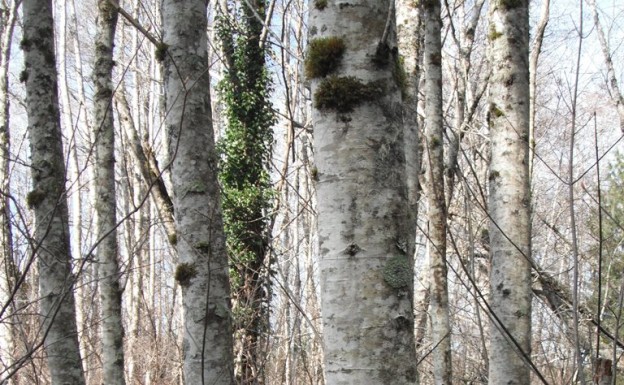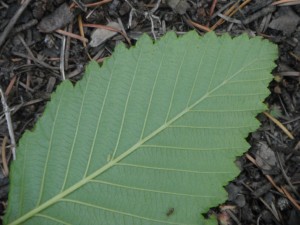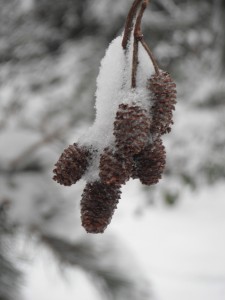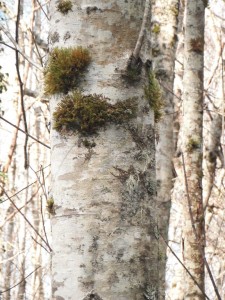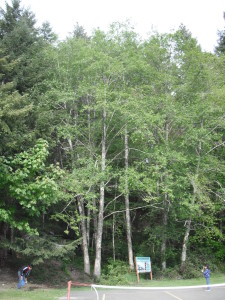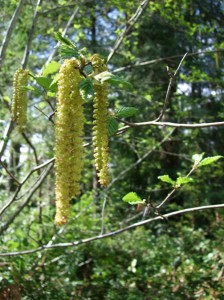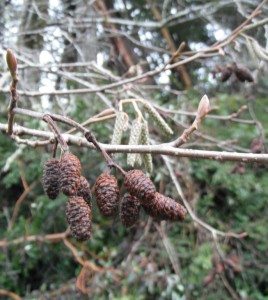Red Alder The Birch Family–Betulaceae
Alnus rubra Bong.
(AHL-nus ROOB-ruh)
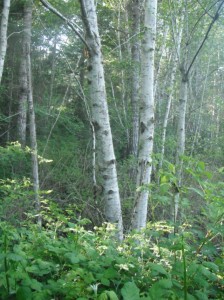 Names: Red Alder is sometimes called Oregon Alder. Rubra means red– referring to the red dye made from its bark and the color of the wood when cut.
Names: Red Alder is sometimes called Oregon Alder. Rubra means red– referring to the red dye made from its bark and the color of the wood when cut.
Relationships: There are about eight alder species that reach tree size in the United States and Canada, about 20 or 30 species worldwide. White Alder, Alnus rhombifolia, is similar to Red Alder but is smaller; it is mostly an inland species is found in our range in northern Oregon.
Distribution: Red Alder is found from southeast Alaska to southern California, with some isolated communities in northern Idaho.
Growth: Red Alder grows rapidly and can reach 40-80 feet (15-25m). It is relatively short-lived and rarely lives past 100 years.
Habitat: Red Alder is most often found in moist woods and along streambanks. It quickly colonizes recently cleared land.
Wetland designation: FAC, Facultative, it is equally likely to occur in wetlands or non-wetlands.
Diagnostic Characters: Red Alder has thin, gray bark often with patches of white lichens. Because of the whitish appearance of the bark, it is often confused with Paper Birch. Its most distinguishing feature is its wavy, toothed leaves with revolute margins (edges that are slightly rolled under). Long catkins appear in spring, before the leaves, producing copious amounts of pollen. It produces small brown cone-like strobiles less than an inch (2cm) long that remain on the tree through the winter.
In the Landscape: Although many consider Red Alder a “weed” tree because it will often invade landscapes, this tree is the first choice for ecological restoration. Red Alder is a host to nitrogen-fixing bacteria that form nodules on tree roots. Because of this association, the introduction of Red Alder to disturbed sites can quickly improve the fertility of soils, making the site more amenable to colonization by longer-living conifers. Red Alder can form attractive groves in young forests, especially along rivers and streams.
Phenology: Bloom Period: February to April. Alder pollen is a major allergen. The cone-like strobiles shed large amounts of small winged nutlets September to December. Wind dissemination is very effective for natural regeneration.
Propagation: It is extremely easy to propagate by seed; no treatment is necessary, only sunlight is required. “Volunteers” weeded out of other areas can be easily potted up or transplanted to more appropriate locations.
Use by people: The wood of Red Alder was second only to Cedars in its use for woodworking by natives. Dishes, spoons, platters, masks and many other items were made from Red Alder wood. Alder wood is considered the best wood for smoking salmon. A red or orange dye was made from the bark to color red cedar bark and to make fishnets invisible to fish. The bark of Red Alder was also valued for its medicinal qualities; it is known to have antibiotic properties and contains salicin, which is used to make aspirin. Red Alder is the most important hardwood in the Pacific Northwest. It is used for furniture, cabinetry, small manufactured items, paper and paper products. The hard wood burns hot and relatively long, making it an excellent choice for firewood.
Use by wildlife: Finches eat the seeds of Red Alder. Deer and elk eat the leaves, twigs and buds of young trees. Stands of Red Alder are favorable habitat for deer, especially on hot days in summer and early fall. Beavers eat the bark and use the stems for building dams and lodges.
Links:
Consortium of Pacific Northwest Herbaria
WTU Herbarium Image Collection, Plants of Washington, Burke Museum
E-Flora BC, Electronic Atlas of the Flora of British Columbia
Jepson Manual, University of California
Ladybird Johnson Wildflower Center
USDA Forest Service-Fire Effects Information System
Virginia Tech ID Fact Sheet + Landowner Fact Sheet
Native Plants Network, Propagation Protocol Database
Native American Ethnobotany, University of Michigan, Dearborn

